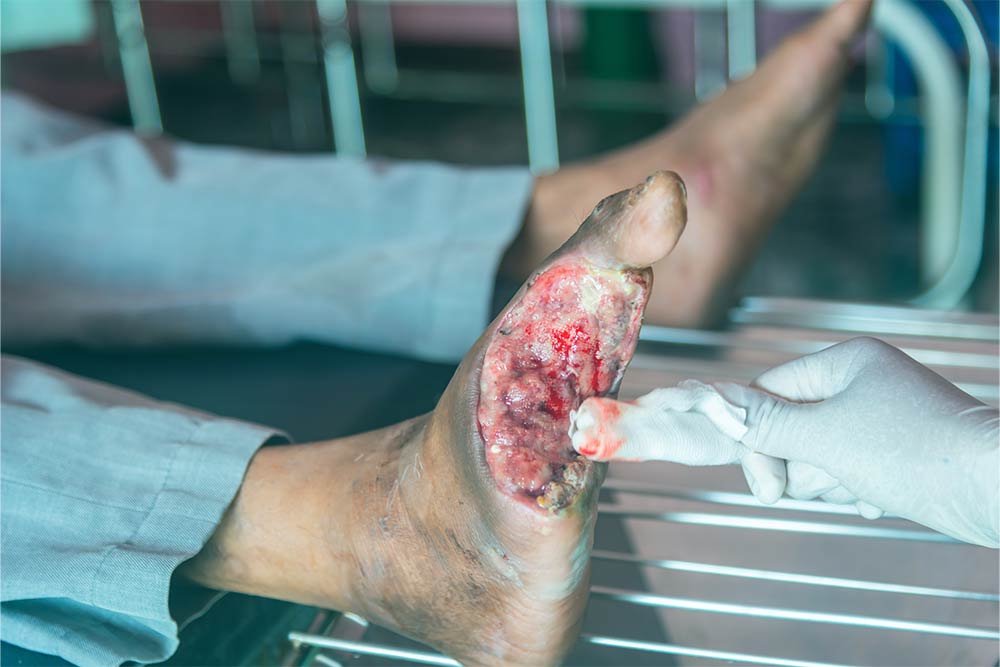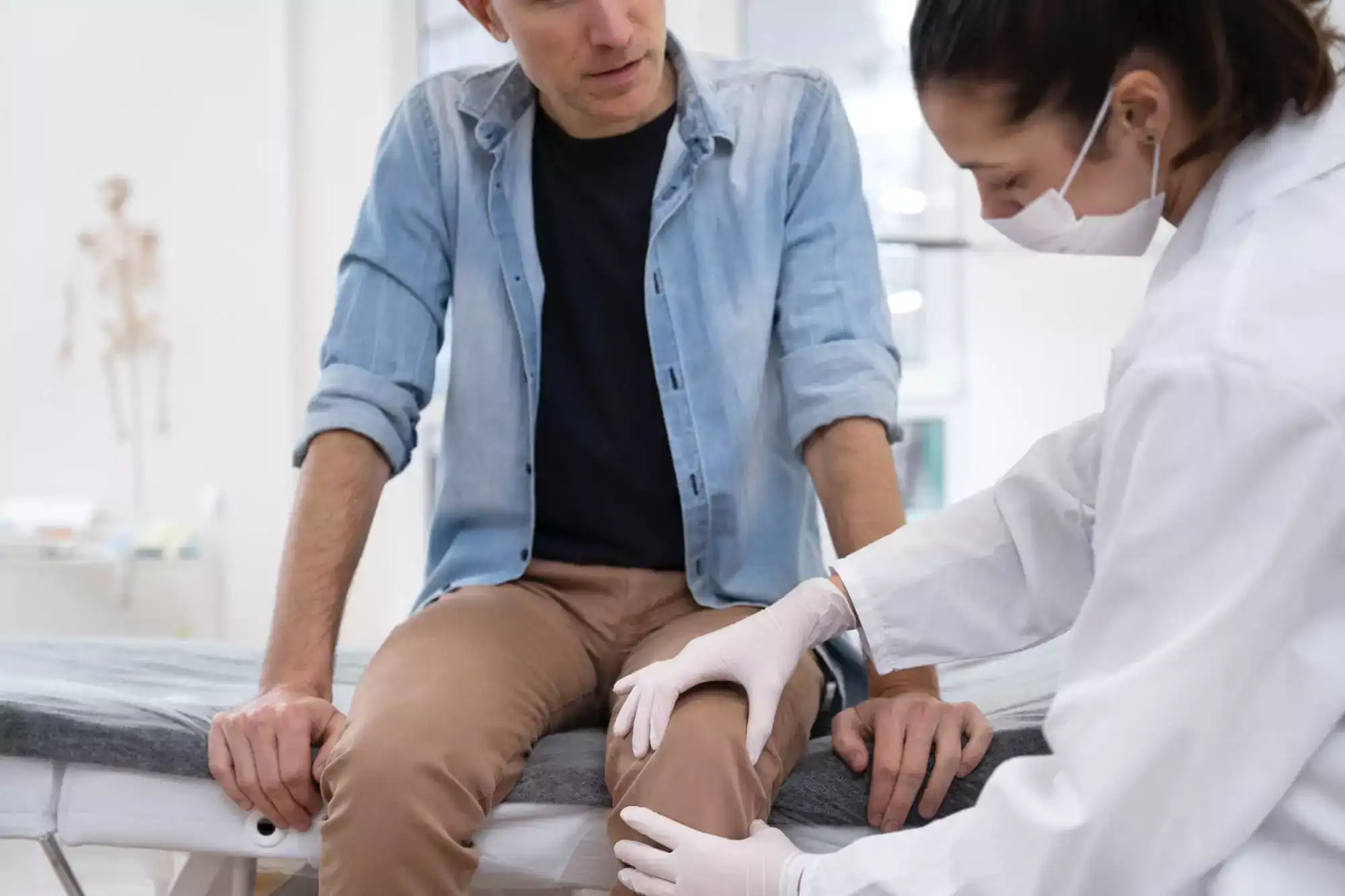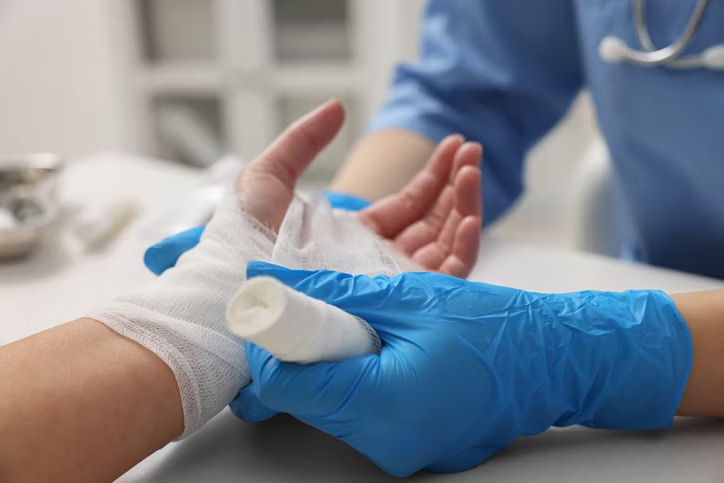Foot wounds that linger and fail to heal are a serious concern for individuals living with diabetes. These wounds are not just uncomfortable—they can lead to infections, severe tissue damage, and in the most critical cases, amputation. Because diabetes affects circulation and nerve health, minor cuts or pressure points on the feet often go unnoticed until they worsen. This makes specialized care not just helpful but essential. Orthopedic treatment for foot wounds that won’t heal in diabetes provides a focused approach that promotes healing, protects tissue, and restores mobility so patients can return to their normal lives with greater confidence.
Understanding Diabetic Foot Wounds
Diabetes places unique stress on the body’s ability to repair itself. Elevated blood sugar damages blood vessels, reducing circulation to the feet. With less blood flow, wounds do not receive the oxygen and nutrients required for healing. At the same time, diabetic neuropathy reduces sensation, which means small cuts or blisters may not even be noticed until they become infected.
Common signs of diabetic foot wounds include:
- Persistent redness, swelling, or warmth around the injury
- Wounds that remain open for weeks without improvement
- Pain or numbness that makes walking difficult
- Signs of infection such as pus, odor, or spreading redness
Left untreated, these wounds progress to ulcers, deep tissue infection, or even gangrene. The risks underline the importance of orthopedic treatment for foot wounds that won’t heal in diabetes, as timely care can stop small problems from becoming life-changing complications.
Why Orthopedic Care is Essential for Chronic Diabetic Foot Wounds
Orthopedic specialists bring a unique perspective to managing chronic foot wounds. While traditional wound care focuses on cleaning and dressing the injury, orthopedic care addresses the structural and mechanical factors that contribute to poor healing.
One of the biggest challenges in diabetes is pressure on the wound site. Even a small ulcer can worsen if pressure from walking or standing prevents it from closing. Orthopedic specialists design strategies to redistribute weight, reduce friction, and support natural healing. This structural focus ensures wounds are not only treated but protected from recurring stress.
Another critical component is preserving tissue and bone health. Without orthopedic support, infections can spread to the bone (osteomyelitis), requiring aggressive treatment or surgery. Orthopedic treatment for foot wounds that won’t heal in diabetes is vital for protecting bone integrity, maintaining alignment, and ensuring long-term mobility.
Orthopedic Treatment for Foot Wounds that Won’t Heal in Diabetes
At Tec Orthopedics, every patient undergoes a comprehensive evaluation before treatment begins. The goal is not just to heal the wound but to understand the full scope of the problem—circulation, nerve function, muscle strength, and structural alignment. This allows for a plan that supports healing and prevents future complications.
Comprehensive Assessment: The process starts with detailed examinations. Orthopedic specialists check circulation, nerve sensitivity, and bone health. Imaging may be used to detect hidden infections or bone involvement. This full picture helps create a personalized strategy for care.
Infection Prevention and Management: Diabetic foot wounds are especially vulnerable to infections. Orthopedic specialists apply advanced wound cleaning techniques, protective dressings, and, when necessary, prescribe targeted medications. Preventing infection is a central goal of orthopedic treatment for foot wounds that won’t heal in diabetes, since infection is the leading cause of worsening outcomes.
Pressure Offloading Techniques: Even the best wound care will fail if the wound remains under constant pressure. Orthopedic specialists design custom solutions to offload pressure, such as special footwear, orthotics, braces, or casting techniques. By redistributing weight away from the wound, the body gains a chance to heal without repeated stress.
Manual Therapy and Targeted Exercises: Orthopedic care often incorporates physical therapy to strengthen surrounding muscles, improve flexibility, and enhance circulation. Gentle exercises help patients regain mobility while ensuring the foot is supported during the healing process. These therapies reduce the risk of future wounds and support overall orthopedic wellness.
Lifestyle and Mobility Support: Education plays a vital role. Patients receive guidance on daily foot care, proper footwear, safe activity levels, and lifestyle adjustments to support healing. Orthopedic treatment for foot wounds that won’t heal in diabetes emphasizes long-term strategies so patients can maintain independence and reduce the risk of recurrence.
Benefits of Orthopedic Treatment for Diabetic Foot Wounds
Patients who receive specialized orthopedic care gain significant advantages compared to standard wound care alone. These benefits include:
- Improved Healing Outcomes: Wounds close more effectively when circulation, pressure, and structural issues are addressed.
- Reduced Risk of Infection: Proactive orthopedic treatment decreases the chances of severe infections.
- Enhanced Mobility: Patients regain the ability to walk, move, and exercise safely.
- Preservation of Tissue and Bone Health: Orthopedic care prevents long-term damage that could lead to amputation.
- Lower Recurrence Rates: By correcting underlying mechanical problems, orthopedic treatment reduces the likelihood of future wounds.
These advantages show why orthopedic treatment for foot wounds that won’t heal in diabetes is not just about recovery but about securing long-term health and quality of life.
Why Choose Specialized Care
Tec Orthopedics is dedicated to supporting patients with diabetes through every stage of their healing journey. The team combines compassion with advanced orthopedic techniques to provide care that goes beyond wound closure. Patients benefit from:
- A patient-first approach that treats each case individually
- Integration of innovative therapies with proven orthopedic methods
- A focus on restoring confidence, independence, and overall well-being
Choosing specialized care ensures that both the immediate wound and the long-term challenges of diabetes are managed effectively. Orthopedic treatment for foot wounds that won’t heal in diabetes is most effective when delivered by a team committed to both science and compassion.
Prevention and Long-Term Management Strategies
While treatment is essential, prevention remains the best way to manage diabetic foot wounds. Orthopedic specialists guide patients with practical strategies such as:
- Daily Foot Checks: Inspecting for cuts, blisters, or redness every day.
- Proper Hygiene: Washing and drying feet carefully, especially between the toes.
- Protective Footwear: Wearing shoes that fit correctly and reduce pressure points.
- Regular Checkups: Visiting an orthopedic specialist for ongoing monitoring.
- Healthy Lifestyle Choices: Managing blood sugar, staying active, and eating well to support circulation and nerve health.
By combining these strategies with professional care, patients greatly reduce their risk of wounds that won’t heal.
Takeaway
Diabetic foot wounds that do not heal represent one of the most dangerous complications of diabetes. Without specialized care, they can quickly progress to infections, severe tissue loss, and even amputation. Orthopedic treatment for foot wounds that won’t heal in diabetes provides a comprehensive solution that focuses on wound closure, mobility restoration, and long-term health protection. With advanced techniques, patient-centered care, and a focus on prevention, individuals with diabetes can regain confidence in their movement and protect their overall well-being.
FAQs about Orthopedic Treatment for Foot Wounds that Won’t Heal in Diabetes
What makes orthopedic treatment different from standard wound care?
Orthopedic care goes beyond wound dressings. It addresses circulation, pressure, alignment, and musculoskeletal health, ensuring wounds can heal fully and safely.
How long does it take for a wound to heal with orthopedic treatment?
Healing time depends on circulation, wound size, and overall health. With proper orthopedic intervention, many patients experience faster recovery compared to standard care.
Are custom orthotics necessary for all patients?
Not every patient needs custom orthotics, but many benefit from pressure-relieving footwear or braces designed to protect the wound during healing.
Can orthopedic treatment help prevent amputation?
Yes. Orthopedic treatment for foot wounds that won’t heal in diabetes is specifically designed to preserve tissue, prevent infections from spreading, and maintain bone health—all of which reduce the need for amputation.
When should someone with diabetes see an orthopedic specialist?
Any wound that does not show signs of improvement within a week should be evaluated. Pain, swelling, or infection are urgent warning signs that require immediate orthopedic assessment.






